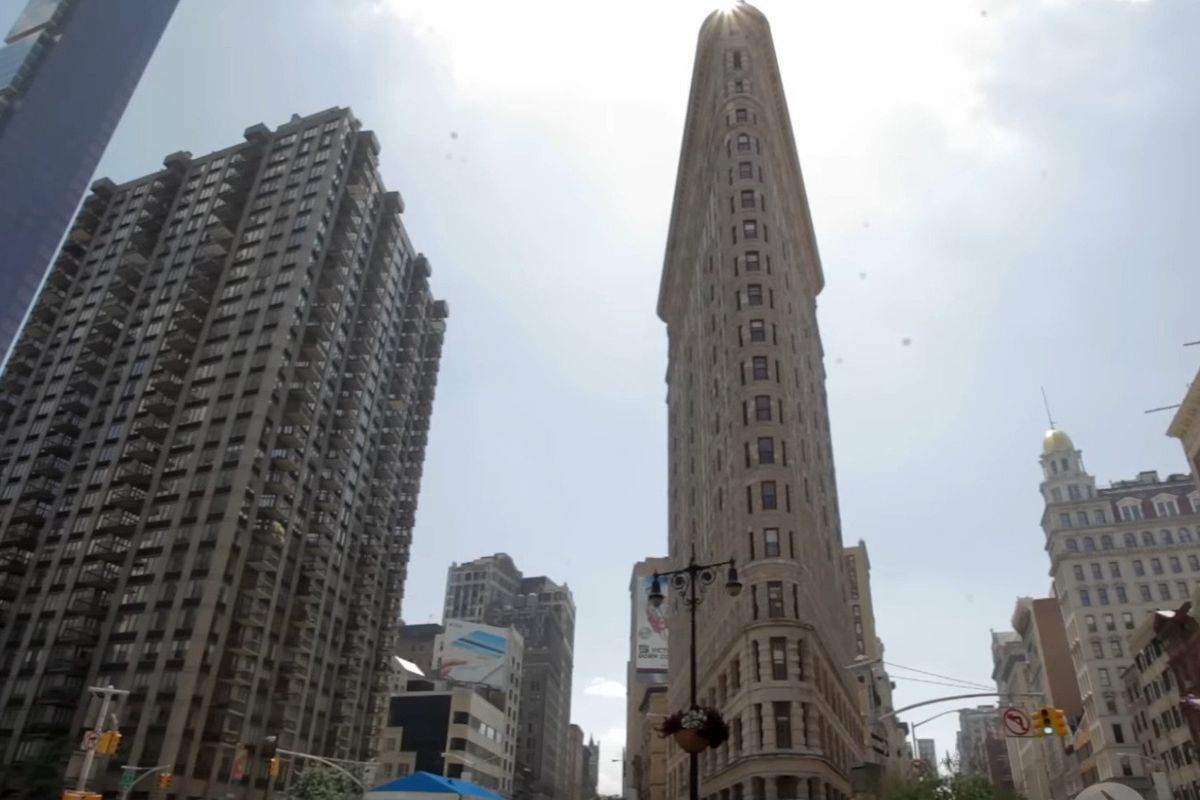New York City's Flatiron District
It's being said by conservatives and liberals: America faces a crisis of affordable housing. And the way out of it is to build more houses.
Wouldn't it make more sense to first understand the extent of the problem? Real estate interests have sucked in advocates for the poor in their YIMBY (Yes in My Backyard) campaigns. Their mission is often to bulldoze through the zoning laws that ensure a neighborhood's quality of life.
Many residents in America's homeless encampments can't afford anything. New units might provide rent relief for some working-class tenants, down on their luck. Others have problems that go beyond matters of supply and demand.
YIMBY schemes can get pretty outrageous. A developer in New York City recently punched through local zoning laws to build an 80-story billionaire's skyscraper near Manhattan's staid Sutton Place. The area was already full of 20-story apartment buildings, but this guy got permission to break through the height limits in part by offering to create some "affordable" apartments — which happened to be miles away in Queens.
In the meantime, he displaced about 80 families, most of whom lived in the old walkups that actually did provide housing at working-class rents. Often gone too on such projects are the little street-level shops, the florists and the shoe repairs, which preserve a sense of place.
Conservatives frequently tout Houston as a model for affordable housing, crediting its lax zoning laws. The larger reason is that Houston is surrounded by Texas. It can spread into the prairies and gently rolling hills. San Francisco is surrounded on three sides by water.
What happens in this country when people feel priced out of neighborhoods is they create new neighborhoods. High rents in Manhattan sent younger workers into neglected parts of Brooklyn that have since been revived.
Gen Z, meanwhile, is reportedly looking at smaller cities, where they can find more space at less cost. The destinations include Oklahoma City; Birmingham, Alabama; Indianapolis; Cincinnati; and Louisville, Kentucky. That trend should take pressure off the very expensive big cities while breathing new life into some very pleasant metros with fine housing stock, places that earlier generations had bypassed.
In the suburbs, there has been such a thing as exclusionary zoning — single-family homes only on large lots — originally intended to keep out poorer people. And some zoning rules that forbid duplexes (two-family homes) make little sense. Converting a garage into a granny apartment shouldn't be a problem. There are also good arguments for filling in some low-density areas, especially near public transportation.
It does not follow, however, that suburbs must submit to any new tower that destroys the small-town feel of their downtowns. Building booms can destroy the historic structures that make a place special.
This is happening all over the world. In Cairo, for example, working-class neighborhoods are being bulldozed and replaced by concrete high-rises.
"If you were being invaded, all what you'd care about is your monuments, your trees, your history, your culture," Mamdouh Sakr, an Egyptian architect and urbanist, said. "And now, it's all being destroyed, without any reason, without any explanation."
Back in the U.S. housing market, rent increases have moderated of late — to the point where economists predict housing should soon bring the inflation numbers down. Falling interest rates are lowering the cost of buying a house. New construction and incentives for some owners to fix up old spaces are indeed adding to supply.
So let's not level neighborhoods in the interests of massive projects. Some ways to address the cost of housing will involve private decisions. Some may involve public subsidies. They certainly shouldn't require handing our Main Streets to the real estate barons.
Follow Froma Harrop on Twitter @FromaHarrop. She can be reached at fharrop@gmail.com. To find out more about Froma Harrop and read features by other Creators writers and cartoonists, visit the Creators webpage at www.creators.com.
Reprinted with permission from Creators.








